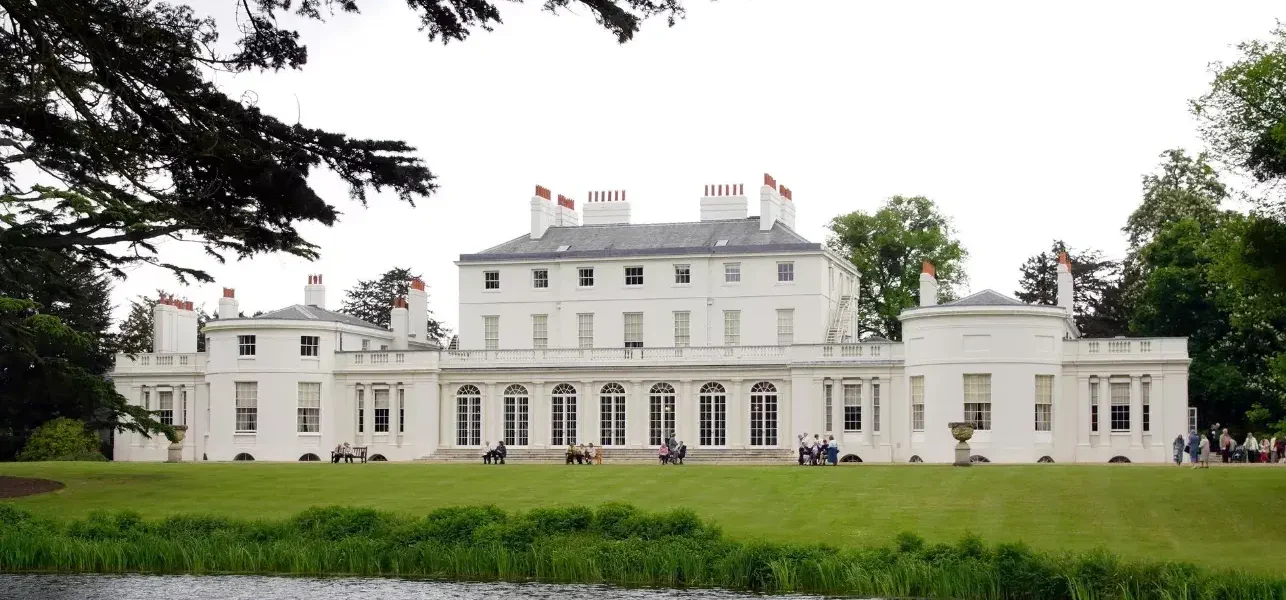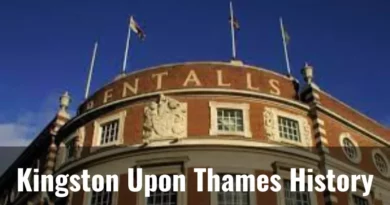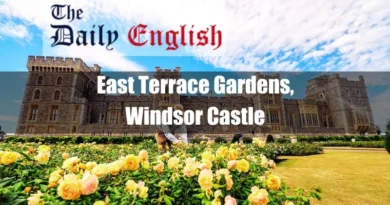I. Introduction
Standing majestically within the verdant embrace of Windsor Home Park, Frogmore House whispers tales of royal history, architectural ingenuity, and a love of nature. From its beginnings as a substantial 17th-century country house to its present-day status as a treasured heritage site, Frogmore has witnessed the changing tides of British monarchy while evolving into a captivating tapestry of architectural beauty, landscaped artistry, and cherished memories. This article delves into the rich history, architectural marvels, and enchanting gardens of Frogmore House, offering a glimpse into this unique haven of royalty and tranquillity.
II. Frogmore House History

A. Early Years of Frogmore House (17th-18th Century)
1. Construction and Ownership:
In 1684, a new chapter began for the land now known as Frogmore House when renowned architect Hugh May laid the foundation for the original house. This marked the beginning of its journey through changing hands and evolving identities.
- Barbara Villiers, Duchess of Cleveland (1684-1709): A powerful woman who wielded significant influence in the court of King Charles II. Known for her flamboyant personality and close relationship with the king, the Duchess likely used the house as a private retreat.
- Later Owners (1710-1792): Following the Duchess of Cleveland’s ownership, Frogmore House passed through several hands, including the Duke of Grafton and individuals like Sir Charles Hotham and Henry Fane. While details about this period are limited, historical records suggest it continued to serve as a private residence for these owners.
- Also, read The Windsor Castle Fire 1992: A Historical Catastrophe.
2. Notable Owners and Residents:
- Barbara Villiers, Duchess of Cleveland (1684-1709): (as mentioned above)
- Henry Fane (1767-1792): A politician and diplomat who served as British ambassador to Portugal and Russia. Although details of his residency at Frogmore remain limited, his ownership adds to the house’s rich history.
3. Architectural Style and Features:
Shrouded in the mists of time, the specifics of the original Frogmore House remain elusive. Historians believe it adhered to the prevalent Georgian style, characterised by its symmetrical design, large windows, and red brick facade. However, details are scarce due to a need for more surviving documentation. It resembled a typical country house of the era, offering its inhabitants a comfortable and spacious residence.
Limited surviving documentation makes it difficult to pinpoint the exact architectural details. However, the house likely resembled the era’s typical, comfortable, and spacious country residence.
4. Use of the House and Grounds:
Although the precise details are lost to time, Frogmore House undoubtedly served as a tranquil retreat for its owners and their families. Nestled amidst the verdant landscape of the Frogmore estate, it offered a sanctuary away from the bustle of court life.
The extent of social gatherings and events held on the property remains unclear. Historical records or letters might shed light on this, but for now, the possibility of occasional social gatherings adds a layer of intrigue to the otherwise peaceful atmosphere. With their sprawling greenery, the surrounding gardens provided a perfect haven for leisure and recreation. Here, residents could indulge in leisurely strolls, relaxation, and simply soaking in the beauty of nature.
Overall:
While details about Frogmore House’s early years are scarce, leaving room for informed speculation, one thing remains certain: this period laid the groundwork for its remarkable journey. From its unassuming beginnings as a country residence to its later transformation under Queen Charlotte’s vision, Frogmore House embarked on a path that would see it become a cherished symbol of royal history and architectural grandeur.
- Also, read Windsor Castle Opening Times: Everything You Need to Know.
- Also, read Windsor Castle Tickets: A Proven Comprehensive Guide.
B. Queen Charlotte’s Transformation of Frogmore House (1792)
Seeking solace from the rigid formality of court life, Queen Charlotte, wife of King George III, embarked on a transformative journey for Frogmore House in 1792. Inspired by the idyllic charm of “Le Petit Trianon” at Versailles, she envisioned a sanctuary dedicated to relaxation, family bonding, and artistic pursuits.
To bring her vision to life, Queen Charlotte entrusted the renowned architect James Wyatt with the task of metamorphosis. He embarked on a meticulous process that harmoniously blended the existing Georgian core with the burgeoning Gothic Revival style.
Preserving the original structure’s essence, Wyatt meticulously incorporated elements of the Gothic Revival, infusing the house with a touch of romanticism and mystery. Pointed arches, intricate decorative stonework, and the iconic Gothic Library became defining features of this architectural masterpiece.

- Also, read The Windsor Castle Fire Salvage Operation 1992.
But Queen Charlotte’s vision extended beyond the existing walls. Wyatt expanded the house by adding new wings and rooms, each catering to her diverse needs and desires. The Royal Apartments offered luxurious accommodations for the family. At the same time, the Conservatory provided a sun-drenched haven for indulging in nature’s beauty. The Garden Pavilion, a charming octagonal structure, became a perfect spot for quiet contemplation amidst the verdant landscape.
Queen Charlotte’s transformation of Frogmore House was more than just a renovation; it manifested her tastes and aspirations. It is a testament to her keen eye for beauty, her appreciation for the natural world, and her desire for a private haven away from the demands of courtly life. Queen Charlotte’s vision transformed Frogmore House, blending the existing Georgian core with a heavily Gothic Revival style, inspired by Versailles’ Le Petit Trianon. The resulting masterpiece offered a tranquil haven for relaxation, family, and artistic pursuits.
- Also, read Windsor Castle Changing of the Guard: Where History Coming Alive.
- Also, read Windsor Castle Tour: A Comprehensive and Best Guide.
- Also, read The Windsor Castle Dogs.
1. Incorporation of New Styles and Features
Under Queen Charlotte’s discerning eye, Frogmore House witnessed a seamless blend of architectural styles and artistic expressions. To complement the newly infused Gothic Revival elements, renowned landscape architect William Chambers embarked on a meticulous transformation of the surrounding grounds.
Chambers’ vision for the landscape resonated with the picturesque movement, aiming to create a harmonious union of formal and informal styles. He meticulously crafted the Dutch Garden, a vibrant testament to the geometric design and floral splendour. The Rose Garden, bursting with fragrance and colour, offered a fragrant sanctuary. The Kitchen Garden, with its rows of vegetables and herbs, showcased the self-sufficient lifestyle of the era.
Winding paths meandered through the landscape, leading visitors past tranquil lakes and over charming bridges, creating a sense of discovery and natural wonder. Scattered throughout the gardens were exquisitely crafted follies and pavilions, offering havens for rest, contemplation, and artistic inspiration.
Queen Charlotte’s keen eye for interior design was evident within the walls of Frogmore House. The Royal Apartments, reserved for the family, were adorned with elegant furniture, intricate artwork, and luxurious furnishings, reflecting the grandeur and formality of royal life. The Gothic Library, a masterpiece of architectural ingenuity, featured soaring ceilings, intricately detailed stained-glass windows, and a meticulously curated collection of rare books. Each room, meticulously designed and furnished, whispered tales of Queen Charlotte’s refined taste and appreciation for artistry.
2. Use of Frogmore House:
Under Queen Charlotte’s reign, Frogmore House became a haven of tranquillity and artistic expression. Freed from the constraints of court life, she used it as a private retreat for leisure, family gatherings, and artistic pursuits. The house witnessed intimate royal gatherings, joyous celebrations, and quiet moments of reflection amidst the verdant landscape.
Queen Charlotte’s vision and dedication ensured that Frogmore House transcended her reign. Subsequent monarchs, including George IV, William IV, and Queen Victoria, embraced Frogmore as a cherished retreat, each leaving its mark on its history and enriching its evolving narrative.
3. Legacy:
Queen Charlotte’s transformation of Frogmore House stands as a testament to her vision, artistic sensibilities, and appreciation for nature. It is an architectural and landscape masterpiece and a symbol of royal history, artistic expression, and the enduring power of nature. Today, Frogmore House continues to inspire and captivate visitors, offering a glimpse into a bygone era and a reminder of the enduring legacy of Queen Charlotte’s remarkable transformation.
- Also, read Windsor Castle Tickets Advantage Card: Know Everything.
- Also, read Exploring Buckingham Palace to Windsor Castle Journey.
C. Frogmore House: A Royal Retreat in the 19th Century

Following Queen Charlotte’s reign, Frogmore House continued its journey as a cherished retreat, each successive monarch leaving an indelible mark on its history.
1. King George IV (1820-1830):
While George IV favoured the magnificence of Windsor Castle as his primary residence, he did occasionally utilise Frogmore for entertaining and socialising. His passion for horses was expressed in the construction of the Royal Stables, a magnificent structure that is a testament to his equestrian interests.
2. King William IV (1830-1837):
For King William IV, Frogmore offered a haven of tranquillity away from the pressures of court life. He frequently sought solace in the house’s quietude, utilising it as his preferred weekend retreat. During his reign, the Conservatory was expanded, creating a sun-drenched space for relaxation and contemplation amidst the verdant landscape.
3. Queen Victoria (1837-1901):
No monarch held a deeper connection to Frogmore House than Queen Victoria. She saw it as a sanctuary, a place where she could embrace family life and escape the formality of Buckingham Palace. Under her reign, Frogmore witnessed significant changes that reflected her personal preferences:
- Expansion of the Gardens: Queen Victoria’s love for horticulture and picturesque landscapes manifested in the addition of the Dutch Garden, a vibrant display of geometric design and floral beauty. Nestled amidst the greenery, the charming Garden Pavilion offered another refuge for quiet moments and artistic inspiration.
- Mausoleum Construction: A poignant testament to their love, Queen Victoria and Prince Albert commissioned the construction of the Mausoleum, designed by Prince Albert himself, to serve as their final resting place.
- Hub of Royal Life: Frogmore hosted many events under Queen Victoria’s reign, ranging from intimate royal gatherings and weddings to christenings and even the grand celebration of her Golden Jubilee. These events cemented Frogmore’s position as a bustling hub of royal life.
- Also, read State Apartments at Windsor Castle: An Ultimate Guide.
- Also, read St. George’s Chapel at Windsor Castle in History & Today.
4. Symbol of Royal Privacy and Relaxation:
Throughout the 19th century, Frogmore House remained a cherished symbol of royal privacy and relaxation. Shielded from the public eye, it offered monarchs and their families a sanctuary away from the demands and scrutiny of court life. They could indulge in family gatherings, quiet reflection, and leisurely pursuits within its serene walls. It served as a vital escape, providing a much-needed respite from the pressures of royal duty.
5. Beyond Private Gatherings:
While Frogmore primarily served as a haven for private moments, it also witnessed several notable events that etched their historical mark. Queen Victoria’s wedding to Prince Albert in 1840 occurred within the enchanting Chapel Royal nestled within the estate grounds, marking the start of their remarkable union. In 1887, Frogmore hosted a grand garden party to celebrate Queen Victoria’s Golden Jubilee, a joyous occasion gathering dignitaries and members of the royal family. The estate also served as a place of mourning and remembrance, hosting memorial services for Prince Albert and Queen Victoria after their passing.
6. Legacy of the 19th Century:
The 19th century marked a pivotal period for Frogmore House. Queen Victoria’s profound affection for the estate solidified its status as a treasured royal retreat. Her contributions to the house and grounds, including the stunning Dutch Garden and the charming Garden Pavilion, left an enduring legacy that continues to shape the visitor experience today. Frogmore evolved into a captivating embodiment of royal life through her reign, echoing with memories of laughter, love, and quiet contemplation.
- Also, read Queen Mary’s Dollhouse at Windsor Castle.
- Also, read Windsor Great Park: A Legacy of History, Nature, and Royal Heritage.
D. 20th and 21st Centuries: Changing Times at Frogmore House

As the 20th century dawned, Frogmore House witnessed a gradual decline in royal use. The allure of other residences, with more modern amenities and closer proximity to London, began to overshadow its once-cherished status. While Prince Henry, Duke of Gloucester, and Princess Alice briefly resided there in 1925, the house primarily served as a venue for occasional events and retreats throughout the mid-20th century.
1979-2005, a new chapter unfolded for Frogmore House when it was leased to the American School in London. This marked a shift from its royal past, transforming the house into an educational hub for generations of young minds. However, in 2005, the Crown Estate repurchased the property, recognising its historical significance and potential for public enjoyment.
The period between 2005 and 2019 saw limited public access to Frogmore House. Guided tours offered glimpses into its grandeur, while private events allowed a chosen few to experience its unique atmosphere. However, a new chapter began in 2019 when the house closed its doors for extensive restoration and conservation work. This ambitious project aims to preserve Frogmore’s historic fabric, ensuring its beauty and significance endure for future generations.
Plans are underway to reopen Frogmore House to the public once the restoration work is complete. The focus is creating an enhanced visitor experience, incorporating technology and interactive elements to engage and educate visitors about the house’s rich history and connection to the British monarchy. Additionally, plans exist to explore potential educational programs utilising Frogmore House as a unique learning environment.
- Also, read Devastating Timeline of the Windsor Castle Fire 1992.
1. Restoration and Conservation Efforts:
Frogmore House received a National Lottery Heritage Fund grant in 2016, kickstarting a comprehensive restoration project. Since 2018, the house and its surrounding gardens have undergone extensive interior and exterior renovations, aiming to preserve the historical fabric while incorporating sustainable practices and enhancing accessibility.
2. Frogmore House in the Modern Era:
Frogmore House’s role has shifted from a royal retreat to a cultural heritage site and educational resource. The ongoing restoration ensures that this historical treasure remains accessible for generations. Modernisation plans integrate technology and interactive elements to enhance visitor engagement and provide a deeper understanding of the house’s rich history. Future aspirations include hosting cultural events, educational programs, and research opportunities, further enriching the visitor experience and solidifying Frogmore House’s place as a vital cultural hub.
Frogmore’s diverse gardens offer visual beauty and a thriving ecosystem for wildlife. The lake, meadows, and reeds provide habitat for birds, insects, and small mammals. At the same time, follies and pavilions offer visitors havens for rest and reflection. The charming Garden Pavilion provides a picturesque setting for quiet moments. At the same time, the Mausoleum, a monument to Queen Victoria and Prince Albert’s love, serves as a serene space for contemplation.
Not merely a historical landmark, Frogmore House has transcended its architectural beauty to inspire artists across various mediums. From Jane Austen and Virginia Woolf weaving their stories within its walls to Hollywood productions like “The Crown” showcasing its grandeur, the house’s captivating charm has captivated imaginations for generations. Today, as a cherished public treasure, Frogmore House offers a glimpse into the past, a space for leisure and reflection, and a testament to the enduring power of history and art. Ongoing restoration efforts ensure that this architectural gem and its enchanting landscape will continue to inspire future generations.










Comments are closed.